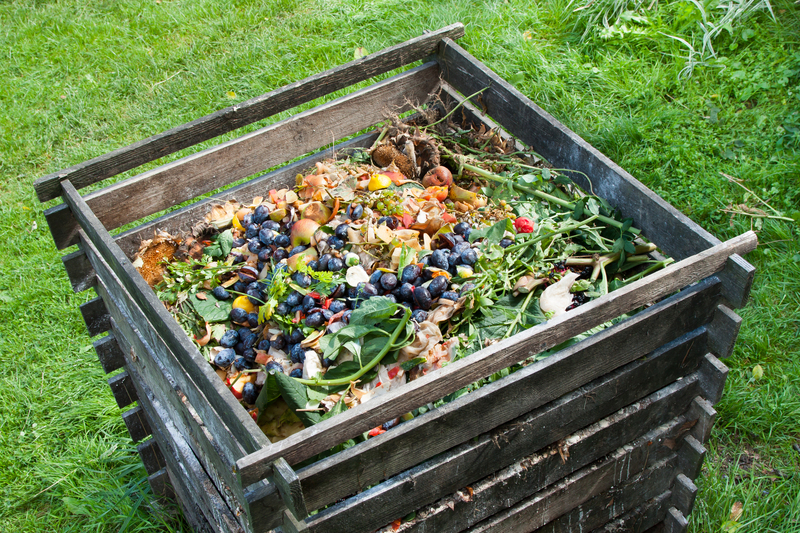How to Sort, Collect, and Dispose of Used PPE Items: A Comprehensive Guide
The ongoing need for personal protective equipment (PPE) has highlighted the importance of properly sorting, collecting, and disposing of used PPE items. With growing concerns about hygiene, environmental impact, and regulatory compliance, it's crucial for individuals, businesses, and communities to follow best practices when dealing with masks, gloves, gowns, face shields, and other used protective gear. In this detailed guide, you'll learn everything you need to know about how to sort, collect, and dispose of used PPE items responsibly and efficiently.

Understanding PPE Waste: What Items Need Special Handling?
Before diving into the steps of management, it's essential to recognize what counts as PPE waste and why its disposal requires extra care. Common personal protective equipment items that become waste include:
- Disposable face masks and respirators
- Gloves (latex, nitrile, vinyl)
- Face shields and protective goggles
- Protective gowns, aprons, and coveralls
- Shoe covers and head caps
These items can carry biological contaminants or chemicals, making them potential biohazards. Improperly disposed of PPE not only threatens human health but also harms wildlife and contributes to environmental pollution.
Why Is Proper PPE Disposal Important?
Here are some key reasons to prioritize correct handling of used PPE:
- Health and Safety: Prevents the spread of infectious agents and cross-contamination in homes, workplaces, and public spaces.
- Environmental Protection: Reduces the volume of plastic and hazardous materials entering landfills and water sources.
- Regulatory Compliance: Meets legal requirements for medical and hazardous waste disposal, avoiding fines and penalties.
Learning how to sort, collect, and dispose of used PPE items is a shared responsibility that safeguards our health and our planet.
The Step-by-Step Process to Sort PPE Waste
1. Identify and Separate Used PPE
The first step in sorting used PPE is to distinguish between general waste and PPE waste.
- Visibly soiled or contaminated PPE (e.g., from a healthcare, laboratory, or high-risk environment) requires separate handling from regular waste.
- Uncontaminated PPE (used briefly, away from hazards) may be disposed of as general refuse in some locations--but always check local regulations.
- Never mix used PPE with recyclables or compostables, as they pose a risk of contamination.
Tip: Label bins clearly in all workspaces, schools, or communal areas to prevent confusion about where to place used protective gear.
2. Segregate by PPE Type and Level of Contamination
Best practices recommend sorting by PPE type as well as level of exposure:
- Low-risk PPE (e.g., masks worn in public): May be classified as municipal solid waste in many municipalities.
- High-risk PPE (e.g., gear exposed to infectious agents): Must be treated as hazardous/clinical waste and disposed of via specialized channels.
- Plastic face shields and safety goggles: If not contaminated, may have separate recycling options. Otherwise, follow hazardous waste protocols.
3. Use Dedicated Containers
Ensuring safe and efficient collection of used PPE items starts with containers designed for the task:
- Use foot-pedal bins with closable lids to minimize hand contact and reduce air exposure.
- Line bins with thick, leak-proof bags (usually yellow or red for clinical/hazardous waste) to contain all items securely.
- Clearly label bins as "PPE Waste Only" to prevent mixing with regular trash.
- Place bins at all PPE removal points--entrances, exits, changing areas, and medical zones.
Never overfill PPE waste containers. Full bins increase the risk of spills and exposure.
Safe Collection Practices for Used PPE
1. Handling PPE Waste
Always wear clean gloves and, if appropriate, a mask when gathering used PPE items. This prevents self-contamination and reduces the risk of spreading infectious materials. Avoid compressing or shaking bags, as this may release contaminants into the air.
2. Secure the Waste Bags
Once full, tie off waste bags tightly with a knot or twist tie. Double-bagging is recommended for high-risk or visibly contaminated items to ensure there are no leaks or tears.
3. Storage Before Disposal
Store PPE waste in a cool, secure location away from food, clean supplies, and public access until it can be removed. Use lockable cabinets or designated rooms if available, particularly for medical facilities or laboratories.
How to Dispose of PPE Items Correctly
General Guidelines for PPE Disposal
- Check Local and National Regulations: Regulations may vary by country, state, or city. Some classify PPE as hazardous, others as municipal waste. Always follow the strictest applicable rules.
- Do Not Recycle Used PPE: Most PPE is made from mixed materials or contaminated, making it unsuitable for recycling streams. Special programs may allow certain uncontaminated items to be recycled.
- Never Flush PPE: Masks, gloves, and gowns can block water treatment systems and pollute waterways if flushed.
- Never Burn PPE at Home: Open burning releases toxic fumes and microplastics into the air. Only industrial incineration facilities can handle PPE waste safely.
1. Household PPE Disposal
If you're disposing of PPE at home (e.g., after coming in contact with crowded places or caring for a sick family member), follow these PPE waste management steps:
- Place all used masks, gloves, and wipes in a lined trash bin--never place them directly on surfaces or in recycle bins.
- Seal the bag tightly when full; wash your hands thoroughly afterwards.
- Set the sealed bag out with your regular household waste, ensuring pets and scavengers cannot access it.
- Sanitize the trash bin handles and lid regularly for extra safety.
Note: If someone in your household is positive for a contagious illness, double-bagging and labeling "Potential Biohazard" is strongly advised. Consult your local health department for additional guidance.
2. PPE Disposal in Healthcare or High-Risk Settings
Healthcare facilities and businesses dealing with infectious or hazardous materials must adhere to stricter protocols:
- All contaminated PPE must be classified as clinical waste and disposed of via specialist hazardous waste contractors.
- Use color-coded bags (usually red or yellow) to indicate the nature of the contents, as per OSHA or WHO guidelines.
- Disinfect all PPE disposal bins frequently and keep thorough records of waste removal for regulatory compliance.
- Train all staff in proper PPE doffing (removal), bagging, and transport procedures to avoid occupational exposure.
3. Community PPE Drop-Off Initiatives
Some communities offer PPE collection points or drop-off programs for the public. If available:
- Place used PPE in designated containers--never randomly deposit masks or gloves in public spaces.
- Do not touch your face after handling used PPE; always clean your hands with sanitizer.
- Encourage friends and family to utilize such programs to keep shared environments clean and safe.
The Environmental Impact of PPE: Can Anything Be Recycled?
It's no secret that personal protective equipment disposal is contributing to the growing problem of plastic pollution. Masks, gloves, and gowns are mainly composed of synthetic polymers like polypropylene, which do not degrade quickly in the environment. However, there are a few emerging options for reducing the environmental toll:
- Some companies and recycling programs accept single-use masks in bulk, especially if unused or lightly used (e.g. cleanroom or factory settings).
- Reusable PPE (e.g., washable masks, face shields) can be sanitized and reused multiple times, drastically cutting waste. Always follow manufacturer instructions.
- Innovative sorting and recycling technologies are in development, aiming to break down polypropylene and recover materials for new products. These are not yet widely available but may become standard in the future.
- Face shields and goggles made from clear plastics like PET or polycarbonate may be accepted in some rigid plastic recycling streams, if sufficiently clean and check with your local recycler.
Never place contaminated PPE in your home recycling bin unless you are certain your recycling facility permits it.
Reducing PPE Waste: Prevention is Key
Ultimately, the best way to minimize the burden of PPE disposal is to reduce your reliance on single-use items where possible:
- Opt for reusable, washable PPE (cloth masks, durable face shields) when suitable for your risk level.
- Purchase only what you need to avoid excess stock that may expire or become waste.
- Train staff, students, and household members in the proper usage and care of reusable protective equipment.
- Advocate for improved PPE recycling programs in your community or workplace.
The right combination of prevention, sorting, careful collection, and responsible disposal can make a significant difference for public health and the environment alike.

Frequently Asked Questions (FAQ) on PPE Waste Management
Can I throw used masks and gloves in the recycling bin?
Generally, no. Used PPE is usually contaminated and made of materials unsuitable for standard recycling. It should be disposed of in the trash or according to local hazardous waste rules.
What should I do if I see discarded PPE in public areas?
If you feel safe to do so, wear gloves to pick it up, seal it in a bag, and place it in a waste bin. Report chronic litter issues to local authorities or community cleanup programs.
Can businesses be fined for improper PPE disposal?
Yes. Many regions have strict rules and heavy fines for failing to properly manage hazardous waste. Ensuring compliance protects your staff and your reputation.
Are there PPE recycling solutions available?
Some specialized programs exist for large quantities or certain types (like non-contaminated plastic face shields), but widespread PPE recycling is still limited. Always check with your local waste management provider.
Conclusion: Responsible Management of Used PPE Makes a Difference
The challenge of how to sort, collect, and dispose of used PPE items will remain with us for the foreseeable future. By being informed and proactive, we can significantly reduce the health, environmental, and social risks associated with improper PPE waste management. Whether you're at home, in the workplace, or at a community level, always follow these best practices for sorting, collecting, and disposing of PPE--and encourage others to do the same.
In summary, responsible PPE disposal is everyone's job. Stay safe, stay informed, and help keep your environment clean.
